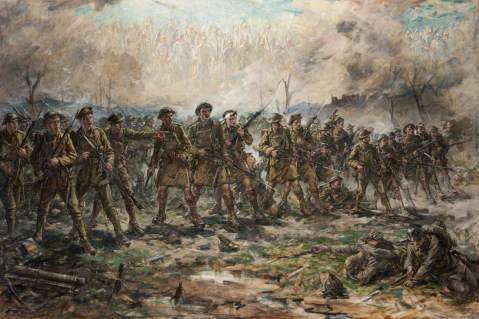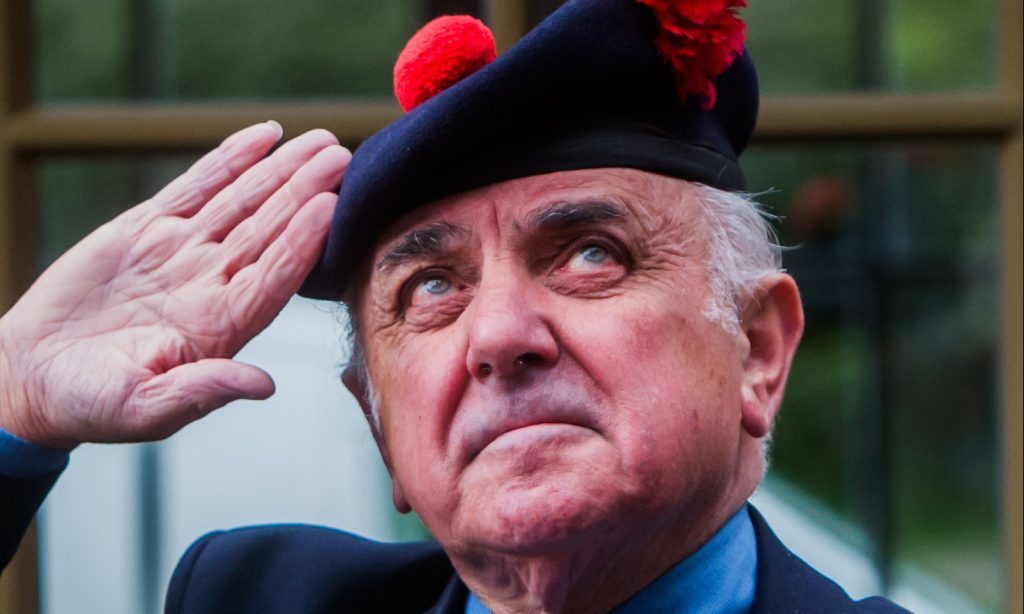A painting by celebrated Scots war artist Robert Gibb, that has been languishing in dark storage at Angus Council, is set to go on display to commemorate the 100th anniversary of the final German offensive of World War I.
The German Spring Offensive as it became known, was a series of attacks along the Western Front during the First World War, beginning on March 21 1918, which marked the deepest advances by either side since 1914.
Realising that their only remaining chance of victory was to defeat the Allies before the overwhelming resources of the United States, who had entered the war the year before, could be fully deployed, the Germans launched four major offensives in a bid to break the Allied lines and outflank the British forces.
The painting, ‘Backs to the Wall’, was inspired by Sir Douglas Haig’s famous Special Order of the Day, which was sent out to all ranks of the British army in France and Flanders in April 1918.
Angus Provost and Kirriemuir Conservative councillor Ronnie Proctor, a former Major in the Black Watch and Veteran’s Champion said: “Today, we know that in April 1918, the war would have just months to run, but at the time, the outcome was far from certain.
“We should not underestimate just how desperate the situation was, or how successful the German Spring Offensive was in the initial stages.
“America had entered the war, but their manpower had not yet reached the Western Front in sufficient numbers, and the situation was truly grim.
“This is reflected in Haig’s order which commanded the men to fight to the end, with no thought of retreat.”
Haig, who was Commander-in-Chief of the British armies in France issued the blunt order three weeks into the attack on Tuesday, April 11 1918.
Highlighting the sheer scale of the German offensive, which stretched across a fifty mile front, Haig stated in his communiqué: “There is no other course open to us but to fight it out.
“Every position must be held to the last man: there must be no retirement.
“With our backs to the wall and believing in the justice of our cause each one of us must fight on to the end.
“The safety of our homes and the freedom of mankind alike depend upon the conduct of each one of us at this critical moment.”
The German army took a fluid approach to identifying objectives, and the fast-moving troops made substantial territorial gains, but the rapid advance meant that the German troops could not be sufficiently supplied, and the attacks faltered.
Having suffered heavy casualties, and in the face of over one million fresh American troops, German forces subsequently lost all of their gains, and suffered the collapse of the famous Hindenburg Line.
The war would finally end in November the same year.
Cllr Proctor said: “With the 100th anniversary almost upon us, I think it is entirely fitting that this magnificent painting is brought out of storage and put on public display, and I hope people will take the time to come and see it, when it goes on show in Forfar and Arbroath.”
Dates of the exhibition will be announced later this month.
The painting was gifted by William Webster of Arbroath, in 1932 to the art collections of the Burgh.
William’s nephew, Lt Joseph Webster was killed in action on October 30, 1914 at Zaandvoorde Ridge.

